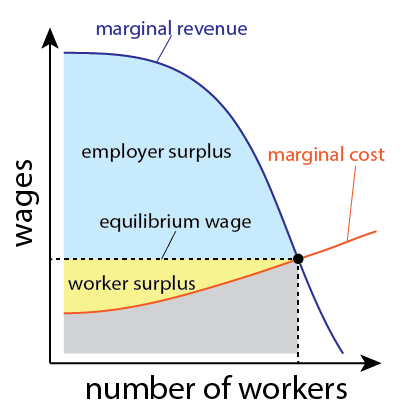In my series discussing capitalism and socialism, I want to discuss another Marxist idea: the social reproduction of labor. Basically it refers to a collection of social activities needed to maintain a labor pool. An introductory article (suggested by Coyote) has a good description of how social reproduction occurs:
1. By activities that regenerate the worker outside the production process and allow her to return to it. These include, among a host of others, food, a bed to sleep in, but also care in psychical ways that keep a person whole.
2. By activities that maintain and regenerate non-workers outside the production process–i.e. those who are future or past workers, such as children, adults out of the workforce for whatever reason, be it old age, disability or unemployment.
3. By reproducing fresh workers, meaning childbirth.
It may be noted that social reproduction is essentially unpaid labor, and is disproportionately performed by women. Thus, social reproduction theory draws a connection between Marxist and feminist theory.
However, I would fault the introductory article for failing to offer any good explanatory narrative. Why is social reproduction unpaid, as compared to more “ordinary” labor being merely underpaid? “Capitalism”, “neoliberalism”, and “sexism” don’t cut it as explanations. So in this post, I’m going to offer a basic explanatory narrative, based on externalized costs.

